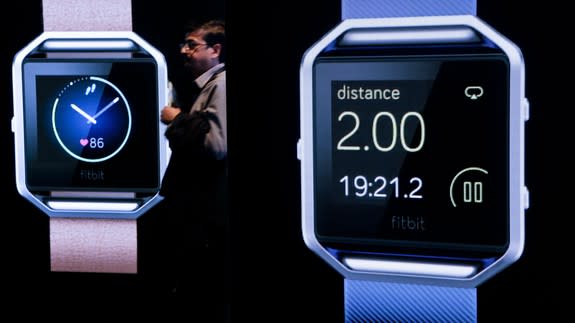Fitbit is stumbling... so it's making a smartwatch

In unsurprising news, Fitbit released a preliminary statement this morning detailing its disappointing financial results for the fourth quarter of last year.
The statement was headlined by an announcement of "cost reductions to improve efficiencies and strengthen performance," which, in plain terms, means layoffs. These "reorganization efforts" amount to the elimination of six percent of Fitbit's workforce, or about 110 employees.
Even as the Fitbit eliminates those positions and tightens its belt in some areas, however, it looks to move into a new vertical within the wearable market: smartwatches.
SEE ALSO: This is what Google's Android Wear 2.0 smartwatches might look like
Fitbit co-founder and CEO James Park announced the company's plans for expansion into the smartwatch space in this morning's release: "We believe we are uniquely positioned to succeed in delivering what consumers are looking for in a smartwatch: stylish, well-designed devices that combine the right general-purpose functionality with a focus on health and fitness," he said.
This isn't a shocking move for Fitbit. The company bought the assets of several struggling wearable makers in recent months, starting with Coin in May 2016, Pebble in December and Vector this January. Most of the acquisitions had to do with tech not typically found in Fitbit's activity trackers, like Coin's wearable payment platform.
Park also teased plans for a standalone Fitbit App Store using Pebble's assets at CES earlier this year.
All of these acquisitions and Park's comments seemed to point to the development of a Fitbit smartwatch. He confirmed this in the statement, mentioning the three acquisitions by name. "With the recent acquisition of assets from Pebble, Vector Watch and Coin, we are taking action to position the company for long-term success," Park said.
While Fitbit's 2016 Blaze release is a watch, it was explicitly marketed as a fitness-first product. Judging from Park's statements, the company's next attempt at entering the smartwatch market will likely break that mold and look to appeal to a broader, more casual user base.
When we reached out for information on the potential timetable for the company's upcoming smartwatch line, Fitbit reps had no comment.
The market Fitbit is entering with a true-blue smartwatch, however, is far from stable. At the end of 2016, the smartwatch market was in a state of flux, as established players abandoned their wearable lines, sales numbers slumped and consumer research data reported most customers weren't interested in the devices without a compelling set of immediately accessible features.
But in 2017, with less competitors in the smartwatch (and wearable) field, there might be more room for success.
"The U.S. wearables market can look forward to a return to growth in 2017," IDC Wearables team research manager Ramon T. Llamas wrote in a state-of-the-market report. "While the market shed a number of vendors in 2016, many of those that emerge will continue to evolve and innovate further. And with new players entering the market from tech and nontech fields, we anticipate sustained upward momentum throughout the forecast."
Still, Fitbit's entry to the field will have to contend with its incumbents. Google plans to release two Android Wear 2.0 smartwatches next month, Samsung's Gear line is innovating with 4G LTE connectivity and iPhone compatibility, and the Apple Watch is still the smartwatch to beat. To have a chance to compete, Fitbit will have to offer something as good if not better than everyone else.
This story was updated to reflect Fitbit's response.

 Yahoo News
Yahoo News 